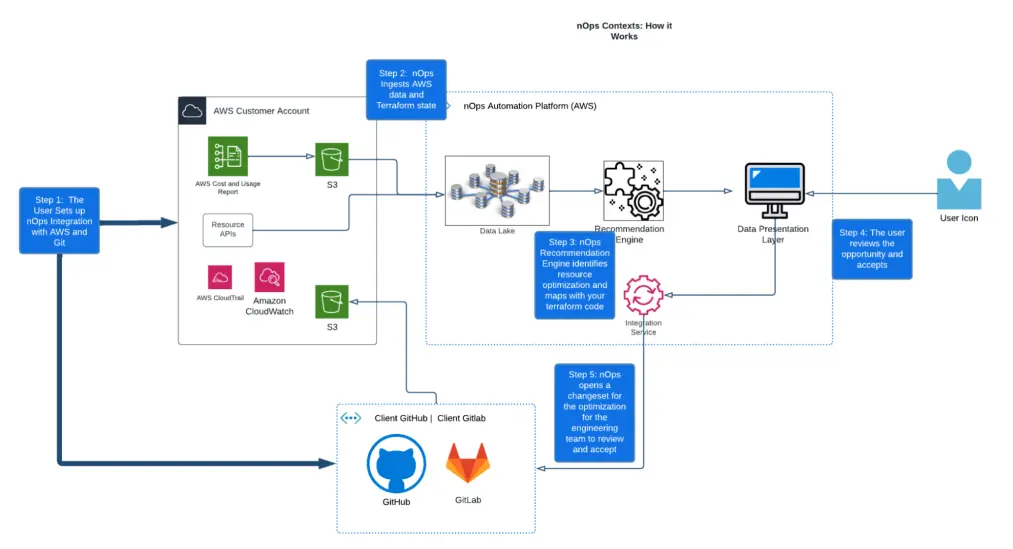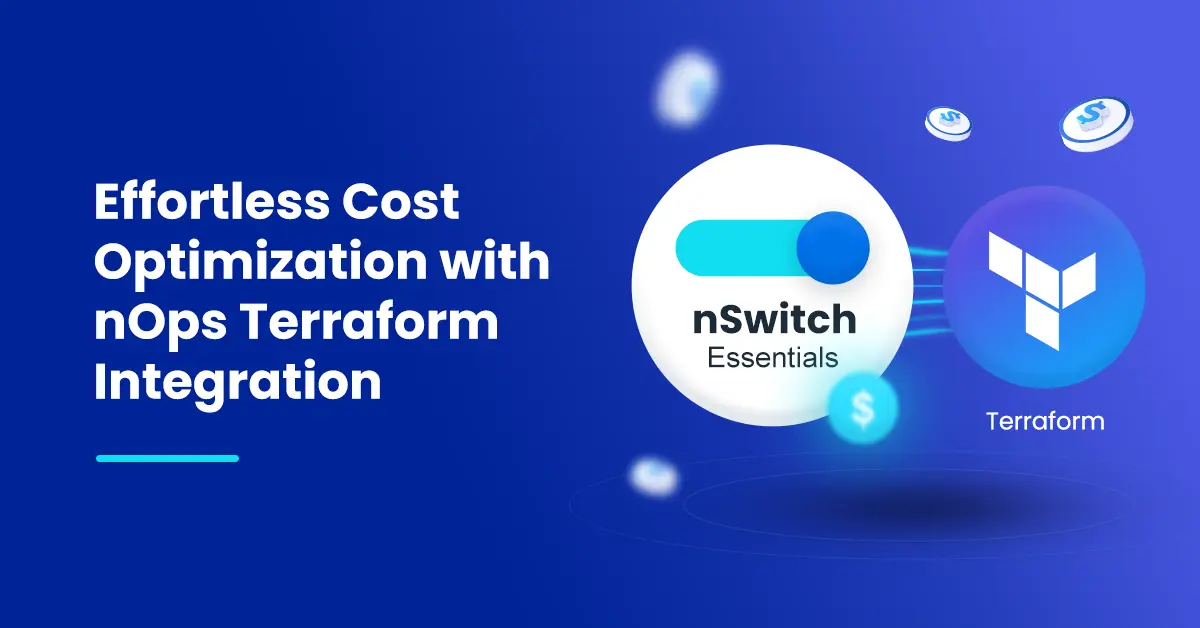Infrastructure as Code (IaC) is the most reliable and widely used practice to manage resources at scale today. IaC is used to automate the provisioning, configuration, and management of infrastructure for your cloud applications.
IaC is now ubiquitous, and resource management is highly dependent on it. Yet despite the relative reliability and ease of managing via IaC, Engineers still face challenges optimizing their AWS usage and costs.
Cloud cost management tools provide visibility and recommendations. Yet, they provide little help in sorting through and implementing those recommendations. Whether it’s rightsizing, volume configuration from gp2 to gp3, or other reconfigurations, acting on recommendations can be a complex and time-consuming process, involving opening up hundreds of tickets and making changesets to your IaC.
nOps was designed to make it easy for engineers to take action on cost optimization recommendations from within the tools and frameworks that they are already using. With one-click implementation and full management of your IaC via a simple and easy Terraform integration, nOps handles these tedious processes for you so that you don’t have to think about it — freeing up your time for building and innovating.
Let’s dig deeper into how this works.
The top three pain points nOps Terraform integration solves
Here are some of the biggest challenges blocking engineers from taking action to optimize resources and reduce cloud spend — and how nOps can help.
- Dependencies and resource abstraction can make reviewing IaC a chore
In cloud environments, resources often have intricate dependencies within IaC. As infrastructure grows and expands, understanding these dependencies becomes increasingly complex. A cluster or even a single piece of code might grab information and configurations from different files, modules, and resources.
IaC may also lack proper documentation, making it difficult to understand the purpose, functionality and dependency of the resources. And engineers often follow different standard practices while creating IaC, especially either by modularizing or either defining them as resources in Terraform.
How nOps helps: By integrating with your IaC, nOps puts this process on autopilot. You no longer have to spend time manually investigating your IaC and resources — freeing hours for more productive tasks.
- Manually configuring IaC can be time-consuming and error-prone
It can also be time-consuming for engineers to modify the code needed to implement recommendations, particularly at scale.
When you have hundreds or more recommendations to implement, writing IaC scripts or templates by hand requires significant time and meticulousness. This work is often repetitive and uninteresting to engineers, leading to delays while hindering action and innovation.
How nOps helps: nOps was created to solve this exact problem. Our mission is to empower engineers to take action with seamless integrations and effortless automations. The platform makes it easy to view all of your recommendations and implement them at scale with a single click.
- Most automation solutions are ineffective with IaC
Many “one-click” options automate acting on recommendations in your production environment, yet leave the IaC in an outdated state. As the IaC is actively managed, the changes are then lost and the previous configuration is restored.
How nOps helps: Terraform integration means that nOps can reverse-engineer your IaC, open up changesets in the right place, and make changes for you. It integrates seamlessly into your workflow so you never have to think about it again.
More on how nOps makes it simple and easy to save
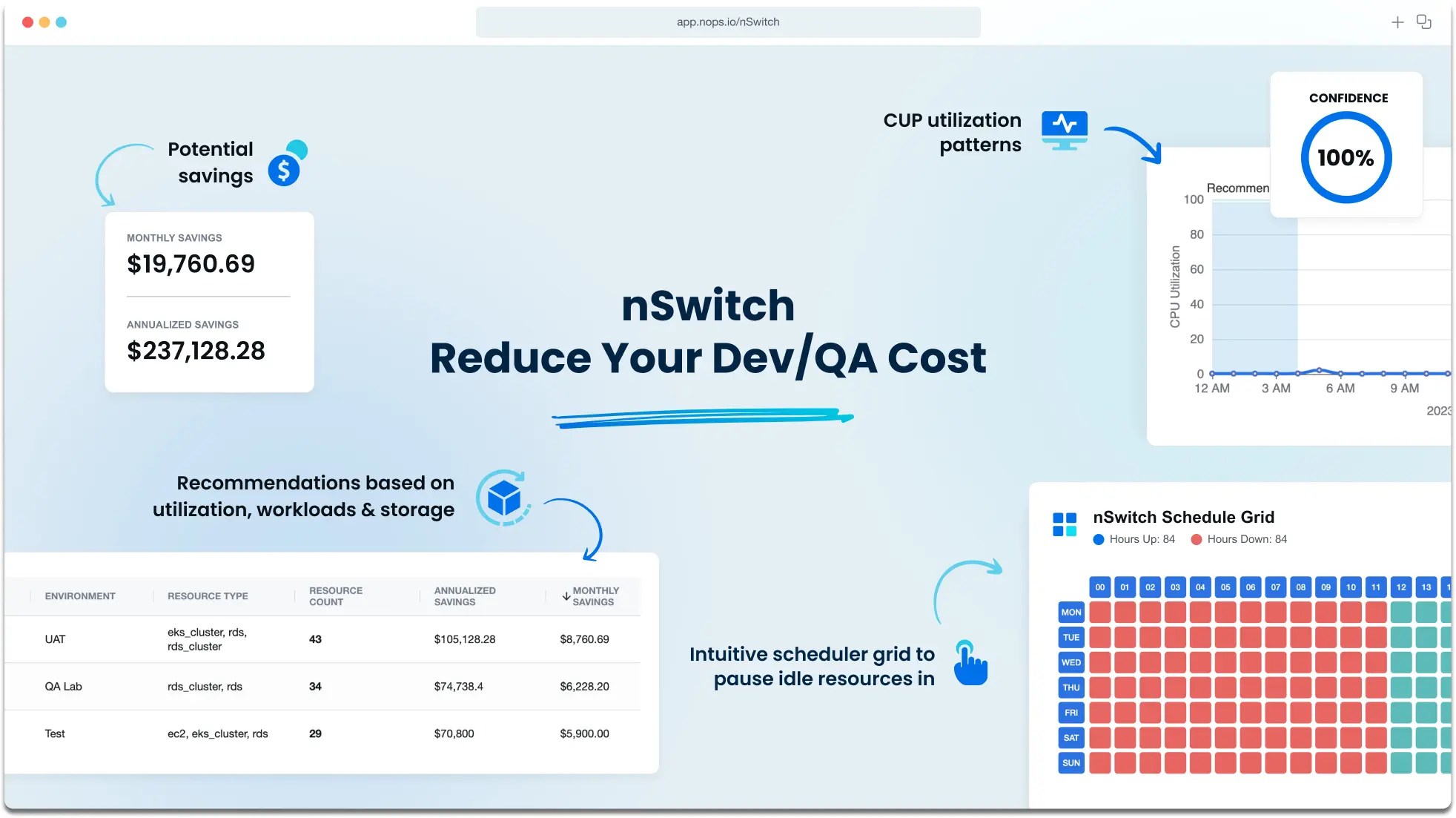 Why spend one more second on updating IaC that you don’t have to? nOps makes it fast and painless to review your recommendations, click to accept, and move on to more interesting and impactful uses of your engineering time.
Why spend one more second on updating IaC that you don’t have to? nOps makes it fast and painless to review your recommendations, click to accept, and move on to more interesting and impactful uses of your engineering time.
This is accomplished via an intuitive dashboard. The platform’s backend integrates with your preferred tools (Git, Terraform, etc.) and nOps’s recommendation engine — with algorithms created on data from processing over a billion dollars of cloud spend.
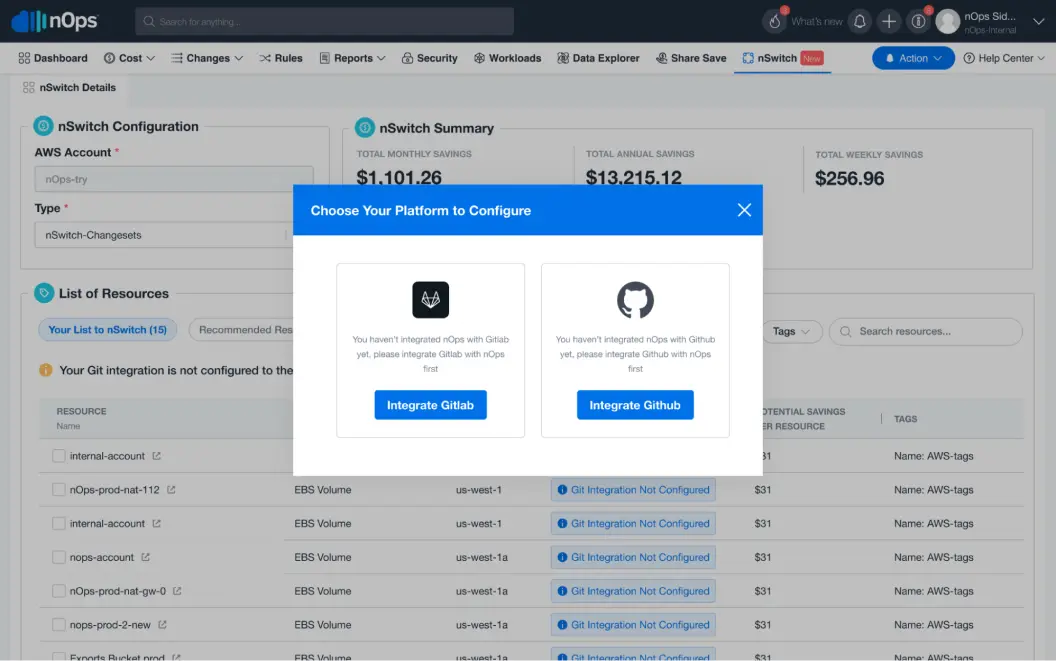 nOps helps you schedule optimization for any resource in your environment, regardless of whether it was built with IaC.
nOps helps you schedule optimization for any resource in your environment, regardless of whether it was built with IaC.
It also fully automates your storage volumes with bulk automated updates. It takes laborious tasks like changing candidate volumes from gp2 to gp3 off your hands via EventBridge or nSwitch Changeset (for those gp2 volumes that are defined in your Terraform configuration file).
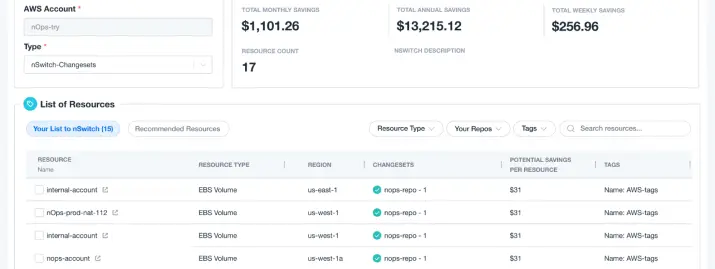
The nOps pricing model means you only save
If you’re under pressure to control your cloud costs without expensive new tools and subscriptions, you’re not alone.
With nOps, you don’t spend — you only save. With our cloud management platform, you only pay based on a fraction of your realized savings. We only make money when you save.
nOps was recently ranked #1 in G2’s cloud cost management category. Join our customers using nOps to slash your cloud costs and leverage automation with complete confidence by booking a demo today!
